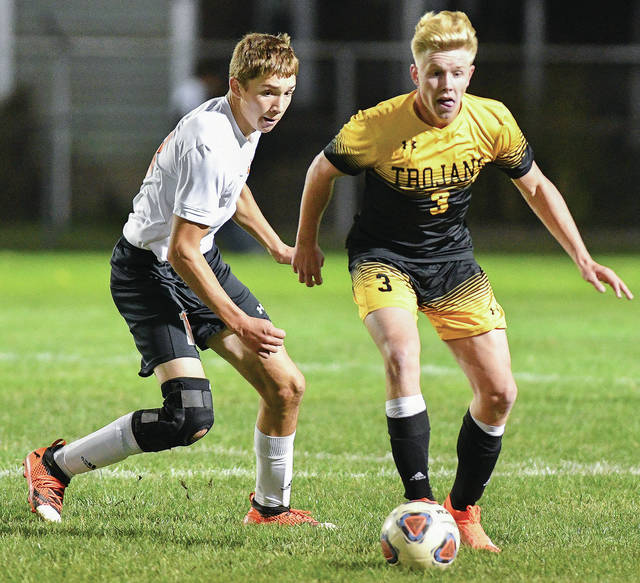
Practices and games may be much different for Ohio high school sports teams this summer and fall if the Ohio High School Athletic Association adopts guidelines the National Federation of State High School Associations released last week.
The NFHS, which is the national governing body of prep sports and is made of 51 state associations, released a 16-page proposal last week outlining recommendations for a gradual resumption of sporting activities. The plans call for a three-phase resumption and suggests many changes to how high school sports are conducted in the coming months.
The OHSAA and most other state associations are in the process of resuming some activities two months after sports across the country were halted due to the COVID-19 pandemic.
OHSAA executive director Jerry Snodgrass said late last week the NFHS’s proposal was designed to be a framework each association can use. While state associations rely on the NFHS to establish rule books for specific sports, the implementation of its policies vary from state-to-state.
“We had a lengthy review of that document,” Snodgrass said. “… Prior to this coming out, I had two staff members that were internally working on guidance, and they were using it. …The idea from the NFHS is that …we don’t have to reinvent the wheel and each state will have to tweak things.”
The NFHS’s first proposed phase has very restrictive recommendations. It permits only workouts and doesn’t allow for gatherings larger than 10 people at a time. It also recommends all athletes and coaches be screened for coronavirus symptoms (including a temperature check) before participating in training activities.
Also included in the national organization’s first phase recommendations are not allowing equipment to be shared and no communal water stations to be available.
The OHSAA followed most of the NFHS’s phase one recommendations when it issued guidelines for schools to begin in-person training activities late last week. The association’s nearly 2.5-month long no-contact ban was lifted on Tuesday, which allowed in-person training activities to resume.
Though there’s no group limit, athletes and coaches must stay six feet apart and also perform coronavirus self-symptom checks before attending training sessions. Equipment at training facilities must be cleaned “before, during and after every event.”
The NFHS’s proposed second phase would allow for groups of no more than 10 people in indoor facilities and no more than 50 at outdoor facilities. Locker room and meeting rooms would be made available for use if social distancing guidelines are followed.
Full practices for sports the NFHS designates as “moderate risk” in terms of virus transmission (like basketball, soccer, volleyball and swimming) would be allowed to begin practices and games in phase two. Daily symptom screenings must be maintained in phase two, and communal water stations would continue to be banned.
The NFHS’s third phase eliminates daily screenings and allows for groups of 50. It also allows for regular practices for most sports and modified practices for “higher risk” sports. Football is the only “higher risk” sport played in fall in Ohio.
Snodgrass said a clearer picture of how practices will be conducted this summer and how fall sports will be conducted will be formed in the next few weeks.
“Many people forget that everything we do is rooted in safety (of athletes),” Snodgrass said.


